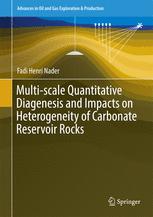

Most ebook files are in PDF format, so you can easily read them using various software such as Foxit Reader or directly on the Google Chrome browser.
Some ebook files are released by publishers in other formats such as .awz, .mobi, .epub, .fb2, etc. You may need to install specific software to read these formats on mobile/PC, such as Calibre.
Please read the tutorial at this link: https://ebookbell.com/faq
We offer FREE conversion to the popular formats you request; however, this may take some time. Therefore, right after payment, please email us, and we will try to provide the service as quickly as possible.
For some exceptional file formats or broken links (if any), please refrain from opening any disputes. Instead, email us first, and we will try to assist within a maximum of 6 hours.
EbookBell Team

5.0
88 reviewsThis book is both a review and a look to the future, highlighting challenges for better predicting quantitatively the impact of diagenesis on reservoir rocks. Classical diagenesis studies make use of a wide range of descriptive analytical techniques to explain specific, relatively time-framed fluid-rock interaction processes, and deduce their impacts on reservoir rocks. Future operational workflows will consist of constructing a conceptual diagenesis model, quantifying the related diagenetic phases, and modelling the diagenetic processes. Innovative approaches are emerging for applied quantitative diagenesis, providing numerical data that can be used by reservoir engineers as entry (input) data, and for validating results of numerical simulations. Geometry-based, geostatistical and geochemical modelling do not necessarily mimic natural processes, they rather provide reasonable solutions to specific problems.